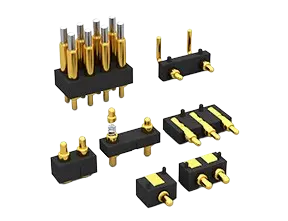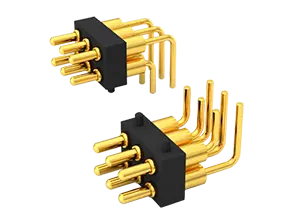As a crucial component in the electronics industry, the evolution of pogo pin design has closely followed technological advancements. This article explores future trends in pogo pin design and how these trends will shape the future of the electronics industry.
With the continuous development of IoT and AI technologies, adaptive design will become a significant direction in pogo pin design. For instance, when devices connect with pogo pins and enter operational heights, they can adapt their spring force to ensure stable contact pressure and resistance. This adaptive design will significantly enhance the performance and reliability of types of pogo pins.
As electronic products trend towards miniaturization and micro-sizing, pogo pins must also shrink in size to fit more compact design spaces. In the future, pogo pins may employ advanced materials and manufacturing processes to achieve higher integration and smaller volumes. Designers will also need to address how to maintain the performance and reliability of pogo pins while reducing their size, an ongoing area for research and exploration.
The use of high-performance materials will be a crucial trend in future pogo pin design. New materials such as high-conductivity materials and composites offer excellent mechanical properties, conductivity, and corrosion resistance, expanding the possibilities for pogo pin design. For example, pogo pins made from materials like 301 stainless steel can offer higher elasticity and longer lifespan, while composite materials can provide better wear resistance and corrosion resistance. Applying these high-performance materials will enhance the performance and reliability of pogo pins to meet broader application demands.
Amid increasing global focus on environmental protection and sustainable development, pogo pin design will need to consider environmental factors. Future pogo pins may use more environmentally friendly materials and production processes to reduce environmental impact. Designers will also need to optimize the structural design of pogo pins to minimize waste and resource consumption. Additionally, pogo pin manufacturers will need to actively engage in environmental initiatives to promote sustainable development across the industry.
In conclusion, future trends in pogo pin design will emphasize miniaturization, the application of high-performance materials, and environmental sustainability. These trends will drive continuous advancement and innovation in pogo pin technology, injecting new vitality into the electronics industry. We can expect future pogo pins to offer higher performance, smaller size, and more environmentally friendly characteristics, playing crucial roles across a broader range of applications.
Pogo Pin Connectors Related News

